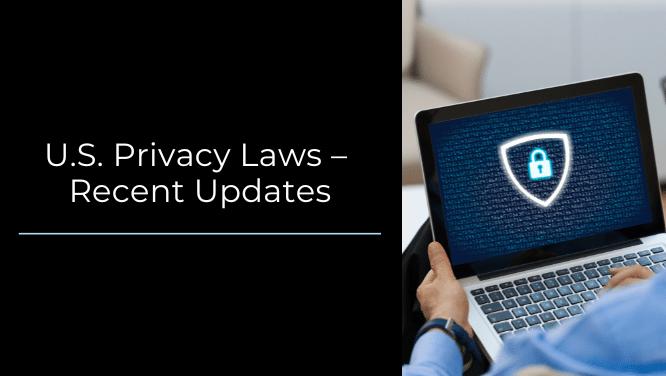Uses and Forgiveness of PPP Loans

- Keenan Weatherford
- |
- April 29, 2020
As companies begin to receive funds under the Paycheck Protection Program (PPP) Loans, they should keep in mind certain restrictions and guidelines regarding use of the funds. The funds are permitted to be used only for certain expenses. In addition, in order for a loan recipient to be eligible for PPP loan forgiveness, the funds must be spent on certain prescribed expenses within a defined time period.
Best Practices for use of PPP Loan funds
- Loan recipients should budget planned expenditures over the 8-week period to maximize the amount eligible for forgiveness.
- Loan recipients should carefully track expenditures of PPP Loan funds. Segregating the funds in a separate bank account is not technically required but should be considered if operationally feasible. Alternatively, loan recipients should create a sub-account in their accounting software so that expenses can be specifically allocated to the PPP Loan funds.
- Loan recipients should be aware that the amount of the PPP Loan eligible for forgiveness may be reduced if the recipient decreases employee headcount or salaries/wages.
- Loan recipients should check the promissory note signed with their bank to make sure that there aren’t any variations on the general PPP Loan program terms.
Permitted Uses of PPP Loan funds; Forgiveness of Funds
| Category | Allowable Use of Funds | Use of Funds that are Eligible for Forgiveness |
|---|---|---|
| Required timing | The SBA has not provided specific guidance on this. Most lenders are advising loan recipients that they have the entire life of the loan (2 years) to spend the money; however, the law might require all funds to be spent by June 30, 2020. We will provide an update upon receipt of more guidance from the SBA.* | Funds spent within the 8-week period beginning on the date the funds are actually received by the loan recipient are eligible for forgiveness. For example, if a loan recipient received its funds on Tuesday, April 21, its 8-week period starts at the beginning of the day on Tuesday, April 21 and ends at the end of the day on Monday, June 15. |
| Required allocation | At least 75% of the money borrowed must be used for payroll costs. The remaining 25% may be used for other allowable uses. | Not more than 25 percent of the loan forgiveness amount may be attributable to nonpayroll costs. |
| Employee compensation / payroll costs | Payroll costs+ Funds may be used to pay salaries in excess of $100K per employee on an annualized basis.* Funds may not be used to pay federal payroll taxes or payroll processor fees. It is unclear whether funds may be used to pay independent contractors. | Payroll costs Funds used to pay salaries, etc. in excess of $100K per employee on an annualized basis will not be forgiven. Recent guidance suggests that the SBA intends to use the 8-week period as the measuring stick; i.e., a maximum of $15,385 per individual will be forgiven.Other benefits such as 401(k) matches and health insurance premiums are not subject to the annualized $100K cap per employee. Although it is unclear whether funds may be used to pay independent contractors, it is clear from SBA guidance that amounts paid to independent contractors will not be eligible for forgiveness. |
| Mortgage obligations | Payment of interest on any mortgage obligation Presumably, this means any indebtedness of the loan recipient, whenever incurred, so long as it is secured by a mortgage on real or personal property.* | Payment of interest on “covered mortgage obligations” only. “Covered mortgage obligation” means indebtedness / debt instrument of the loan recipient that was incurred in the ordinary course of business before Feb. 15, 2020 and is secured by a mortgage on real or personal property. |
| Rent | Payment of rent (including rent under a lease agreement) Presumably, this means any rent, including under equipment leases, no matter when the lease was entered into.* | Payment of “covered rent obligations” only. “Covered rent obligation” means rent obligated under a leasing agreement in force before Feb. 15, 2020. Presumably, this includes rent paid under equipment leases in force before Feb. 15, 2020.* |
| Utilities | Payment of utilities Presumably, this means any utilities, whenever service for the utility began.* | Payment of a “covered utility payment” only. “Covered utility payment” means payment for a service for the distribution of electricity, gas, water, transportation, telephone, or internet access for which service began before Feb. 15, 2020. |
| Other debt obligations | Payment of interest on any other debt obligations that were incurred prior to Feb. 15, 2020 | N/A. None of these payments are eligible for forgiveness. |
Reductions in amount eligible for forgiveness:
- The amount eligible for forgiveness is reduced if the PPP Loan recipient decreases employee headcount or reduces employee salaries or wages.
- Decrease in employee headcount:
-
- Will be measured against average employee headcount from either (a) February 15, 2019 to June 30, 2019 or (b) January 1, 2020 to February 29, 2020. Loan recipients may choose which “baseline period” to use, unless the recipient is a seasonal employer (as determined by the Small Business Association), in which case it must use February 15, 2019 to June 30, 2019.
-
- Reduction in employee salaries or wages:
-
-
- If the total salary or wages of any “Covered Employee” is reduced by more than 25% in the “Covered Period” (i.e., the 8-week period beginning on the date the funds are actually received by the loan recipient), the loan amount eligible for forgiveness is reduced dollar-for-dollar.
- “Covered Employee” means an employee who did not receive, during any single pay period in 2019, wages or salary at an annualized rate of pay in an amount in excess of $100,000.
- Reduction in salary or wages will be determined in comparison to salary or wages paid during the most recent full quarter during which such employee was employed prior to the Covered Period.
- If the total salary or wages of any “Covered Employee” is reduced by more than 25% in the “Covered Period” (i.e., the 8-week period beginning on the date the funds are actually received by the loan recipient), the loan amount eligible for forgiveness is reduced dollar-for-dollar.
-
-
- Decrease in employee headcount:
- The loan recipient may “cure” decreases in headcount or reductions in salary that were enacted between February 15 and April 26 if the loan recipient re-hires workers and/or raises salaries to their previous levels by June 30, 2020.
- Employee headcount:
- SBA will look to number of full-time employees as of February 15, 2020 and compare it to the number of full-time employees as of June 30, 2020. If they are the same, there will be no reduction on account of the decrease in employee headcount between February 15 and April 26.
- Salary/wage reduction:
- If the salary/wages of an employee was reduced between February 15, 2020 and April 26, 2020, and the employer has restored pay to its prior level (i.e., level as of February 15, 2020) by June 30, 2020, there will be no reduction in forgiveness on account of such salary/wage reduction.
- Note: It is unclear exactly how these tests interact with the provisions regarding reduction in forgiveness. For example, if a salary paid to a Covered Employee between April 27 and June 30 is reduced by more than 25% (as compared to the previous full quarter in which the Covered Employee was employed), the amount eligible for forgiveness may still be reduced by the amount of the shortfall. Additionally, if a salary paid to a Covered Employee between February 15 and April 26 is not a reduction as compared to February 14, but is a 25% reduction as compared to the previous full quarter, the amount eligible for forgiveness may still be reduced by the amount of the shortfall. There is similar uncertainty for April 27-June 30 employee headcounts that are below the “baseline” period employee headcounts.
- Employee headcount:
Process for requesting PPP Loan forgiveness:
- We understand that more details on the forgiveness process will be released in the weeks to come, but the basics are as follows.
- PPP Loan recipients will submit a forgiveness request to their lenders, along with supporting documentation such as:
- Payroll tax filings supported to the IRS
- State income, payroll and unemployment insurance filings
- Cancelled checks, payment receipts, transcripts of accounts or other documents verifying payments on mortgage obligations, lease obligations and utility payments
- We expect each lender will send to its borrowers a form to use for requesting forgiveness.
- The lender will have 60 days to make a determination on a request for forgiveness.
- Any portion of a PPP Loan that is not forgiven must be repaid over two years (with a 6-month deferral on payments) at a 1.00% interest rate. There is no penalty for prepayments of this debt.
-
-
*We think that this is the best reading of the applicable section of the CARES Act; however, note that there has not been any specific guidance issued by the SBA on this.



